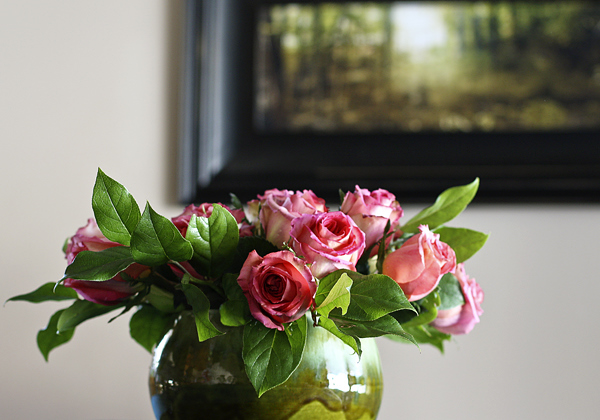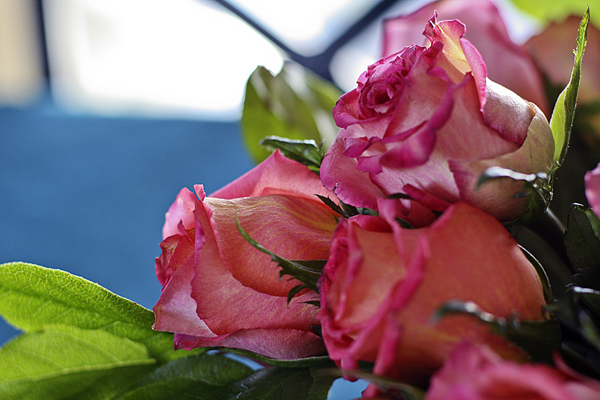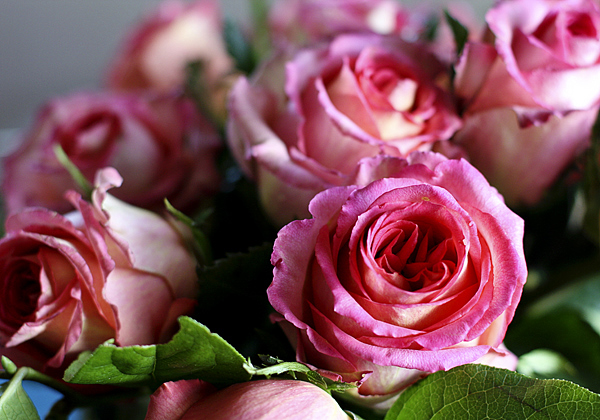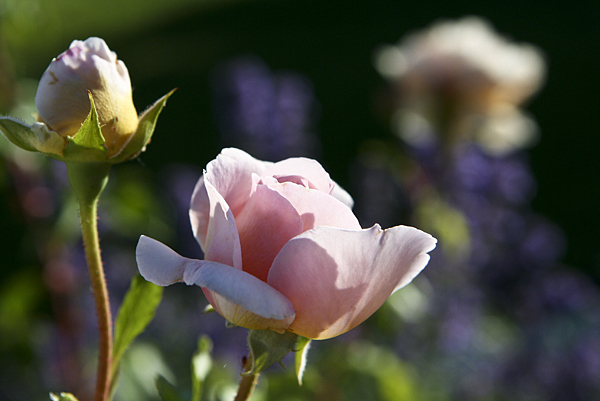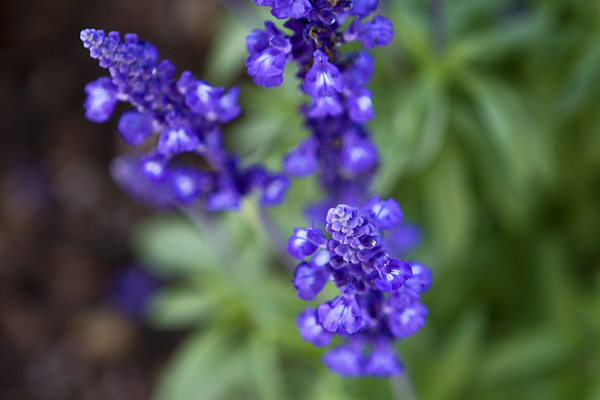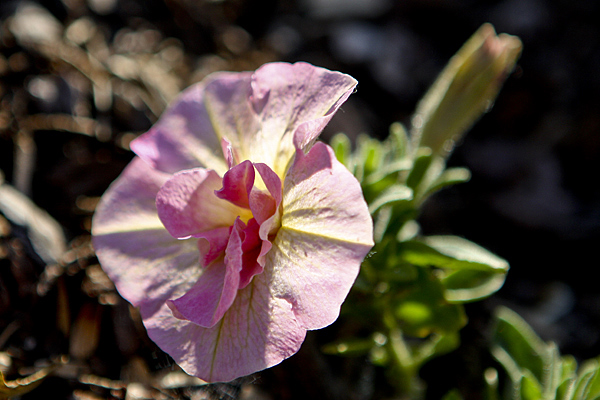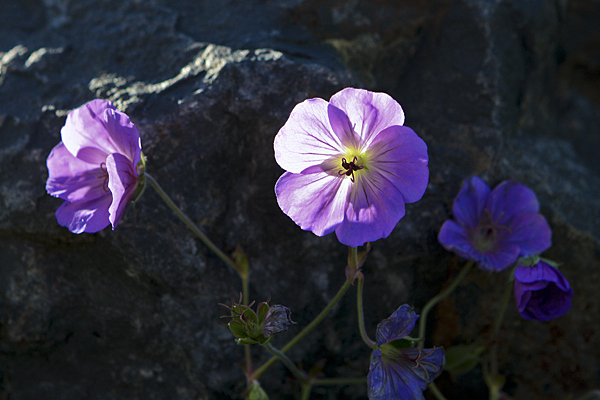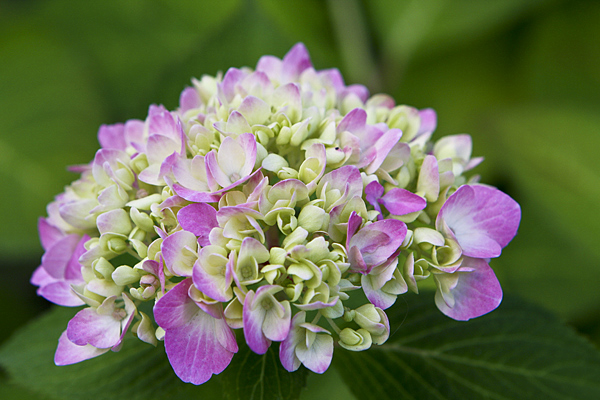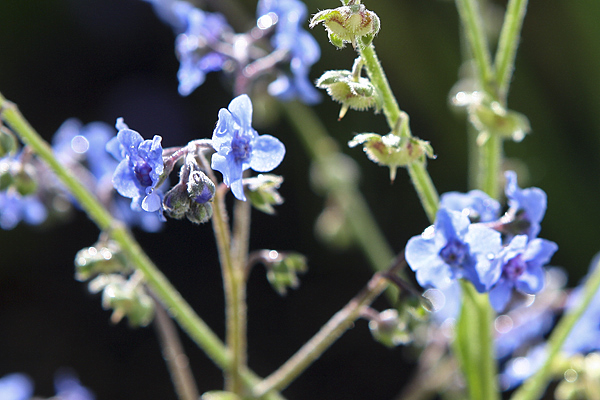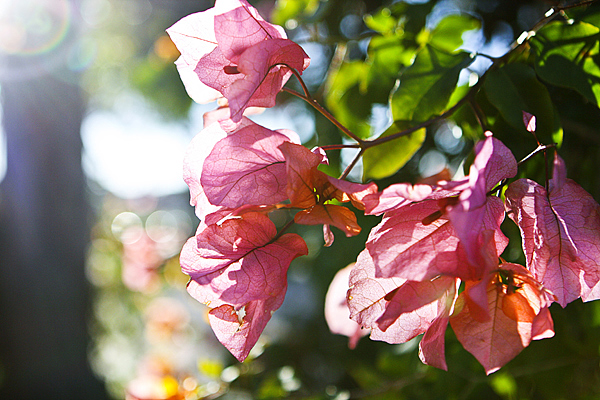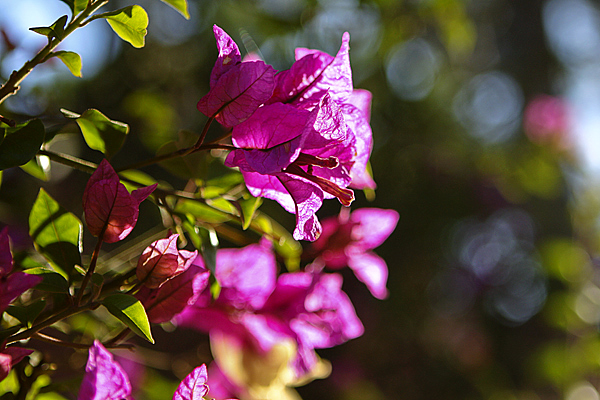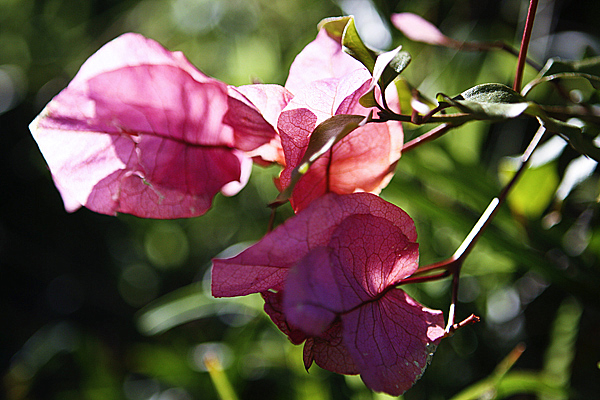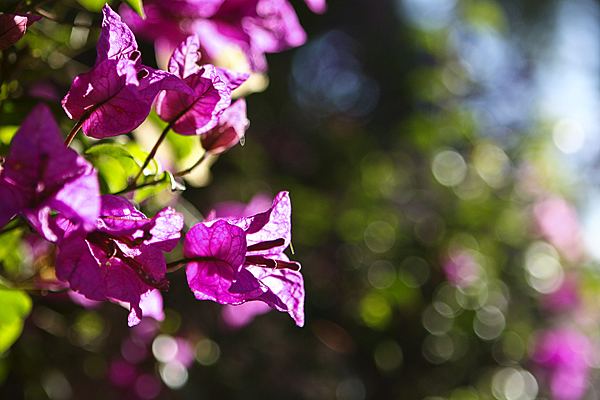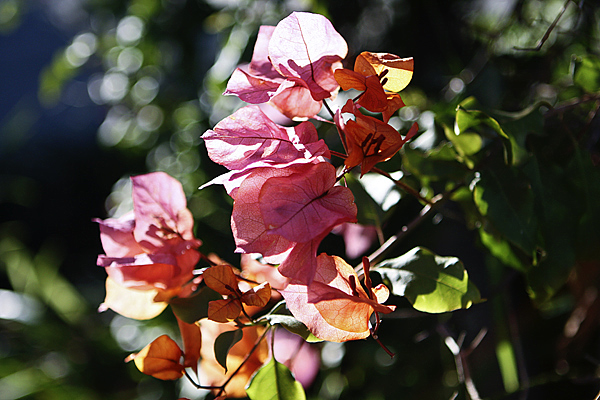
This post is a followup to my post last year on which evergreens actually looked good by midwinter in my zone 5 garden. The 'Queen Charlotte' violet surprised me with fresh-looking green leaves and an actual flower (in January! - a miracle for sure), but be warned that the rest of the photos are more dreary. Honestly I feel like I'm posting pictures of my armpits - very unsavory - but here are the facts on the evergreen situation.

The Sagina subuluta groundcover looks about the same color as it is in summer - with some straw-colored bits mixed in. It doesn't make a huge statement at less than an inch tall, but it's nice to see some patches of green on the ground.

I had high hopes for my two 'Green Tower' boxwoods (click on the name for more info from Monrovia), and they're looking OK but not spectacular. They aren't totally bronze like so many boxwoods, but they aren't a very 'fresh' shade of green, either. Some of the long stems were sticking out sideways (like a bad hair day) after heavy snow, but they have mostly recovered now that the snow has melted.

The only juniper I find attractive, super-hardy 'Blue Star', is of course looking fine despite the cold and snow. You can see the touch of pink in its needles that appears during the cold months. Other types of needle-leaved evergreens do well here in tree or shrub form - arborvitaes, spruces, firs, pines - but they just seem boring and prickly to me, so I don't have any in my yard.

These hellebore leaves are growing in full winter shade on the north side of our home, and the leaves are still a beautiful green but buds have not yet formed. I figured out that if I want my hellebores to bloom before May, they have to get some winter sun. Of course they need summer shade, so planting under deciduous trees is perfect. Their leaves turn brown faster with winter sun, but in exchange I'll get early flowers. All of my other hellebores are getting winter sun and have buds formed and blotchy brown leaves.

The various heucheras in my yard are looking OK, if a bit flattened by the snow. Above is 'Lime Rickey'. 'Green Spice', 'June Bride', 'Prince of Purple', and 'Autumn Bride' all look similar, with slightly faded colors from summer. They'd look better if I would clean out the brown leaves around them, but that hasn't happened yet.

The Juncus spiralis 'Corkscrew' clumps still look pretty good, and they bounce back from the snow easily.

This photo shows Thymus 'Elfin' in front, Penstemon 'Elfin Pink' on the left (how cute, the Elfins are together), and Aubrieta 'Axcent Blue' on the right. All of these plants are doing fairly well this year. The grey thyme looks dreary, but perhaps it's better than bare earth? The penstemon leaves are holding up better this year than last year, looking wilted but green. And the aubrieta even has a few small violet flowers on some plants.

The 'Big Blue' liriope is pale and listless, but still somewhat green. Again, better than bare earth, I guess.

The poor 'Otto Luyken' laurels look like a joke, with the top halves burned brown by subzero temperatures and the bottom halves pretty green where they were protected by snow. They looked better last year. Here's hoping that the stems are still alive and the brown leaves are quickly replaced by green ones during their spring flush of growth.

I'll finish with a 'Golden Lotus' hellebore bud to show that there is hope for spring eventually! As you can see my grand plans for including non-needle-leaved evergreens in the garden haven't been as successful as hoped. At least all the boulders are looking good. It's so hard to find the right balance between winter interest and summer interest in zone 5 - with every 'boring' evergreen shrub you plant, you give up space for flowers and interesting foliage in the summer. Even though our growing season is shorter than most, I spend so much more time outside during that time of year that I'll probably keep weighting my garden toward summer interest. What's your opinion on the right balance?

